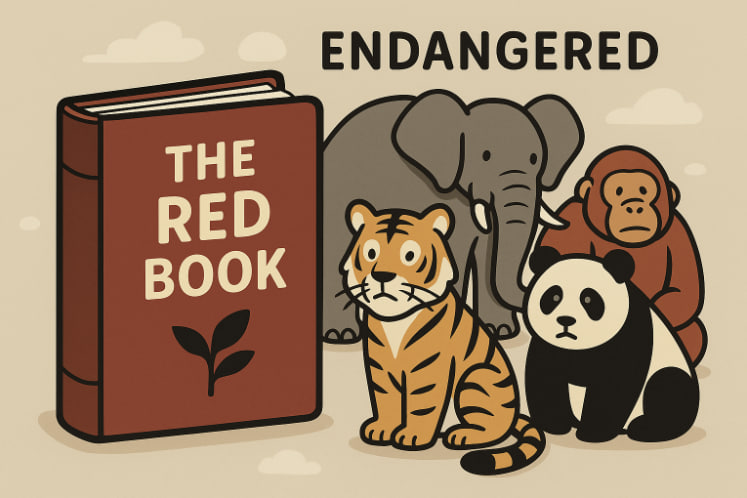The Red Book, officially known as the IUCN Red List of Threatened Species, is the world’s most comprehensive inventory of the conservation status of animal, plant, and fungal species. Maintained by the International Union for Conservation of Nature (IUCN) since 1964, the Red List helps identify species at risk of extinction and serves as a critical tool for conservation planning, policy development, and environmental education.
Purpose and Importance of the Red Book
The Red Book’s main goals are to:
- Assess the extinction risk of species based on scientific criteria;
- Raise global awareness about the threats to biodiversity;
- Guide governments, NGOs, and scientists in conservation efforts;
- Monitor changes in ecosystems and populations over time.
It acts as a warning system, alerting the world when species are nearing extinction and helping focus resources on protecting them.
How Species Are Categorized
Species in the Red Book are classified into several categories based on population trends, habitat range, threats, and reproduction rates:
- Extinct (EX) – No known individuals remaining;
- Extinct in the Wild (EW) – Only survives in captivity or cultivation;
- Critically Endangered (CR) – Extremely high risk of extinction in the wild;
- Endangered (EN) – Very high risk of extinction;
- Vulnerable (VU) – High risk of extinction;
- Near Threatened (NT) – Close to becoming at risk;
- Least Concern (LC) – Relatively widespread and stable;
- Data Deficient (DD) – Not enough information for assessment.
Examples of Red List Species
Some of the most iconic and threatened species in the Red Book include:
- Amur Leopard (CR) – Fewer than 100 individuals in the wild;
- Javan Rhino (CR) – One of the rarest mammals on Earth;
- Vaquita (CR) – A small porpoise on the brink of extinction;
- Saola (CR) – Nicknamed “Asian unicorn,” elusive and critically endangered;
- Orangutan (EN) – Threatened by deforestation and illegal trade.
Plants and fungi are also listed, including Baobab trees, pitcher plants, and medicinal herbs that are disappearing due to habitat loss.
Why It Matters for the Planet
Protecting endangered species helps:
- Preserve ecosystems and food chains;
- Maintain biodiversity, crucial for environmental stability;
- Safeguard genetic resources important for agriculture and medicine;
- Fulfill moral and cultural responsibilities to future generations.
The Red Book reminds us that extinction is irreversible — and often preventable with timely action.
Glossary
- IUCN: International Union for Conservation of Nature, a global authority on species conservation.
- Biodiversity: The variety of life in all its forms, including species, ecosystems, and genes.
- Extinction: The permanent loss of a species from the Earth.
- Conservation: Efforts to protect, restore, and manage wildlife and natural habitats.
- Endangered species: A species at serious risk of extinction in the near future.


